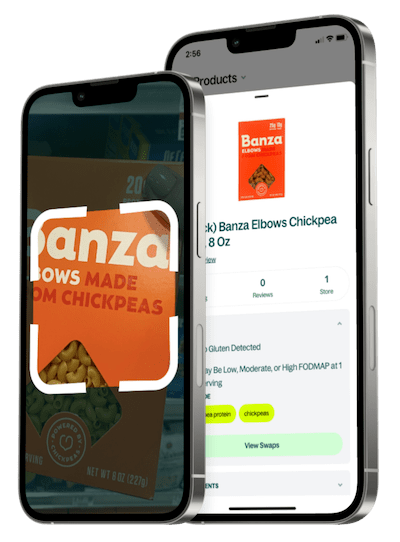Is Nabisco Good Thins The Cheese One Three Cheese Rice & Cheese Snacks 3.5 Oz. Box Low FODMAP?

Description
Nabisco Good Thins, the Cheese One Three Cheese Rice Cheese Snacks, offer a delicious and crispy cheese flavor. Reviewers praise the three cheeses used in these crackers - parmesan, cheddar, and gouda. The crackers are not light, but they provide a light and enjoyable snacking experience. Made with rice and cheese, Good Thins are gluten-free and come in a 3.5 oz sealed packaging that locks in the goodness. Baked to perfection, these crackers can be enjoyed alone or paired with cheese. The overall consensus from reviewers is that the cheese flavor is delicious, crispy, and light.

Description
Nabisco Good Thins, the Cheese One Three Cheese Rice Cheese Snacks, offer a delicious and crispy cheese flavor. Reviewers praise the three cheeses used in these crackers - parmesan, cheddar, and gouda. The crackers are not light, but they provide a light and enjoyable snacking experience. Made with rice and cheese, Good Thins are gluten-free and come in a 3.5 oz sealed packaging that locks in the goodness. Baked to perfection, these crackers can be enjoyed alone or paired with cheese. The overall consensus from reviewers is that the cheese flavor is delicious, crispy, and light.
Ingredients
Whole Grain Brown Rice Flour, Tapioca Starch, Sugar, Parmesan Cheese Powder (Pasteurized Milk, Salt, Cheese Culture, Enzymes), Safflower Oil, Whey, Salt, Rice Flour, Cream, Dried Buttermilk, Cheddar Cheese Powder (Cultured Milk, Salt, Enzymes), Onion Powder, Nonfat Milk, Natural Flavor, Gouda Cheese Powder (Pasteurized Milk, Salt, Cheese Culture, Enzymes), Contains Milk, May Contain Soy, Sesame Seed, Tree Nuts
What is a Low FODMAP diet?
A Low FODMAP diet limits foods high in certain short-chain carbohydrates (FODMAPs) that can be poorly absorbed in the gut. These include specific sugars found in foods like onions, garlic, beans, apples, and wheat. It's commonly followed by people with irritable bowel syndrome (IBS) or other digestive sensitivities to reduce bloating, gas, and discomfort. The diet typically involves an elimination phase, followed by gradual reintroduction to identify personal triggers. When followed carefully, often with a dietitian's guidance, a Low FODMAP diet can help manage symptoms while maintaining a balanced and varied intake of nutrients.
Similar Products
Good Thins Garden Veggie Rice Snacks Gluten Free Crackers, Snack Crackers, 3.5 oz
Good Thins Gluten Free Jalapeño & Lime Corn & Rice Snacks 3.5 Oz. Box
Nabisco Good Thins The Cheese One Parmesan & Garlic Rice & Cheese Snacks 3.5 Oz. Box
Blue Diamond® Almond Nut-Thins® Country Ranch Nut & Rice Cracker Snacks 4.25 oz. Box


